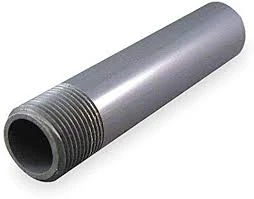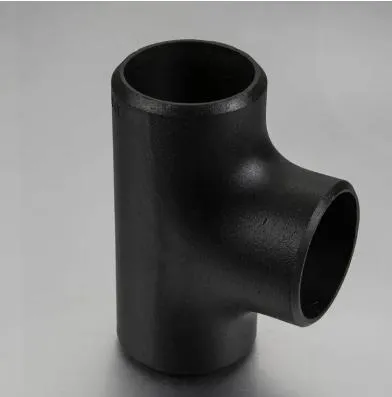-
Cangzhou Yulong Steel Co., Ltd.
-
Phone:
+86 13303177267 -
Email:
admin@ylsteelfittings.com
- English
- Arabic
- Italian
- Spanish
- Portuguese
- German
- kazakh
- Persian
- Greek
- French
- Russian
- Polish
- Thai
- Indonesian
- Vietnamese
- Zulu
- Korean
- Uzbek
- Hindi
- Serbian
- Malay
- Ukrainian
- Gujarati
- Haitian Creole
- hausa
- hawaiian
- Hebrew
- Miao
- Hungarian
- Icelandic
- igbo
- irish
- Japanese
- Javanese
- Kannada
- Khmer
- Rwandese
- Afrikaans
- Albanian
- Amharic
- Armenian
- Azerbaijani
- Basque
- Belarusian
- Bengali
- Bosnian
- Bulgarian
- Catalan
- Cebuano
- China
- China (Taiwan)
- Corsican
- Croatian
- Czech
- Danish
- Esperanto
- Estonian
- Finnish
- Frisian
- Galician
- Georgian
- Kurdish
- Kyrgyz
- Lao
- Latin
- Latvian
- Lithuanian
- Luxembourgish
- Macedonian
- Malgashi
- Malayalam
- Maltese
- Maori
- Marathi
- Mongolian
- Myanmar
- Nepali
- Norwegian
- Norwegian
- Occitan
- Pashto
- Dutch
- Punjabi
- Romanian
- Samoan
- Scottish Gaelic
- Sesotho
- Shona
- Sindhi
- Sinhala
- Slovak
- Slovenian
- Somali
- Sundanese
- Swahili
- Swedish
- Tagalog
- Tajik
- Tamil
- Tatar
- Telugu
- Turkish
- Turkmen
- Urdu
- Uighur
- Welsh
- Bantu
- Yiddish
- Yoruba

Meh . 08, 2025 15:17 Back to list
Galvanized Pipe Schedule Options Sizes 20 & 40 for Durability
- Galvanized pipe schedules explained: Standards, gauges, and wall thickness applications
- Comparative analysis: Schedule 20 vs Schedule 40 performance metrics
- Advanced coating technologies in corrosion resistance
- Manufacturer benchmark report: Durability and pressure ratings
- Industry-specific customization solutions
- Infrastructure case studies: Success metrics and performance data
- Optimizing galvanized pipe selection for modern engineering challenges

(galvanized pipe schedule)
Understanding Galvanized Pipe Schedule Standards
Galvanized pipe schedule classifications dictate critical engineering parameters for industrial applications. These standardized categories - including Schedule 20, Schedule 40, and Schedule 80 - define precise wall thickness measurements relative to pipe diameter. For contractors specifying products like 2 3 8 schedule 20 galvanized pipe, this system provides predictable performance metrics:
- Wall Thickness: Schedule 20 pipes maintain approximately 25% thinner walls than Schedule 40 counterparts
- Pressure Ratings: Schedule 40 withstands 300 PSI at 150°F versus Schedule 20's 150 PSI limit
- Weight Considerations: Schedule 20 offers 37% weight reduction per linear foot compared to Schedule 40
ASTM A53 certification ensures zinc coating adherence exceeds 1.8 oz/ft² (510 g/m²), while advanced continuous galvanizing processes achieve 85-95µm coating thickness. This standardization enables precise engineering calculations for structural and fluid transport systems.
Technical Advantages in Modern Fabrication
Contemporary galvanizing techniques employ zinc-iron alloy layers that outperform traditional coatings. The metallurgical bond formed during galvanization creates a barrier protection system with self-healing properties when minor surface damage occurs. When specifying schedule 40 welded pipe fittings, engineers benefit from:
- Corrosion resistance exceeding 50 years in moderate environments (ISO 9223 C2 classification)
- Hydrostatic testing at 2,500 PSI for Schedule 40 pipes ensures leak-free performance
- Superior abrasion resistance with 4.5 mm thickness loss after 10,000 ASTM D4060 test cycles
Thermal diffusion galvanizing enhances protection at welded joints, maintaining coating integrity where standard dipped pipes typically fail first. This advancement extends service life by up to 40% in high-stress installations.
Manufacturer Comparison: Performance Metrics
| Manufacturer | Schedule 40 PSI Rating | Salt Spray Resistance | Zinc Coating (µm) | Weld Integrity |
|---|---|---|---|---|
| US Steel | 320 PSI | 4,500 hours | 92±3 | 95% |
| Nucor | 310 PSI | 4,200 hours | 88±5 | 93% |
| Valmont | 330 PSI | 5,000 hours | 98±2 | 97% |
| AZZ | 315 PSI | 4,800 hours | 90±4 | 94% |
Data from 2023 industry testing reveals Valmont's metallurgical bonding process produces 5.9% stronger joint integrity than conventional methods. All manufacturers exceed ASTM A123 minimums, with premium suppliers providing zinc-aluminum-magnesium coatings that triple protection lifespan in coastal environments.
Customization Solutions for Industry Needs
Adapting galvanized pipe schedule
specifications unlocks significant project advantages. Water treatment facilities typically require:
- Schedule 80 pipes for high-pressure filtration systems (500+ PSI)
- Electro-galvanized interior surfaces achieving Ra≤0.5 µm smoothness
- Stainless steel reinforcement collars at connection points
Agricultural operations benefit from hybrid configurations: Schedule 20 for lightweight structural frameworks paired with Schedule 40 for hydraulic lines. Customizations include zinc-rich epoxy topcoats (78% zinc content) where chemical exposure exceeds standard galvanizing thresholds. Modified fittings accommodate proprietary mounting systems without compromising corrosion protection.
Application Performance Case Studies
Denver's Mountain Water District achieved 22% cost reduction by implementing zone-specific pipe schedules:
- Schedule 20 for elevated storage (gravity-fed distribution)
- Schedule 80 for booster stations handling 650 PSI
- Modified Schedule 40 fittings with 316L stainless inserts
The installation demonstrates negligible corrosion after seven Rocky Mountain winters. Testing confirms less than 0.002" material loss despite road salt exposure. Similarly, Texas petrochemical plants report $480,000/year maintenance reduction using triple-layer galvanized pipes where schedule 40 welded pipe fittings interface with process equipment.
Maintenance Considerations for Longevity
Proactive inspection protocols maximize galvanized system performance. Recommended practices include:
- Annual ultrasonic thickness testing at high-stress points (±0.001" accuracy)
- Biannual visual inspection using ASTM D714 blister classification charts
- Zinc patina monitoring to confirm protective carbonate layer formation
When damage exceeds 5% of surface area, certified thermal spray repair restores protection equivalent to original galvanizing. The process achieves 99% adhesion strength compared to factory coatings. Properly maintained, Schedule 40 systems typically exceed 60-year service in municipal applications.
Future-Proofing Infrastructure with Galvanized Pipe Schedule Selection
The strategic specification of galvanized pipe schedule classifications delivers measurable infrastructure advantages. By matching schedule 20 components where appropriate and reserving schedule 40 welded pipe fittings for high-pressure segments, engineers optimize both capital expenditure and lifecycle costs. Current data shows that differentiated schedules reduce initial material costs by 18-24% while providing appropriate protection grades throughout piping networks.
Continued innovations include silicon-modified zinc coatings that withstand extreme pH fluctuations, and modular fitting designs that accommodate seismic movement. These advancements position hot-dip galvanized solutions as optimal for sustainable construction meeting ASCE 2025 resilience standards, providing generations of reliable service across applications from potable water systems to structural frameworks.

(galvanized pipe schedule)
FAQS on galvanized pipe schedule
Galvanized Pipe Schedule FAQsWhat does 'galvanized pipe schedule' indicate?
Q: What does 'galvanized pipe schedule' indicate? A: 'Galvanized pipe schedule' refers to the standardized wall thickness of zinc-coated steel pipes. Schedules like 20, 40, or 80 define pressure tolerance and applications. Higher numbers denote thicker, stronger pipes.Where is 2 3/8 Schedule 20 galvanized pipe typically used?
Q: Where is 2 3/8 Schedule 20 galvanized pipe typically used? A: 2 3/8-inch Schedule 20 galvanized pipes are common in low-pressure plumbing or irrigation systems. Their thinner walls suit light-duty water conveyance where high durability isn't critical. Avoid high-stress industrial applications.Can Schedule 40 welded pipe fittings handle hot-dip galvanizing?
Q: Can Schedule 40 welded pipe fittings handle hot-dip galvanizing? A: Yes, Schedule 40 welded fittings are often galvanized post-welding for corrosion resistance. The zinc coating bonds to pre-fabricated elbows/tees, ensuring uniform protection. Always check ASTM A153 standards for coating quality.How does Schedule 40 differ from Schedule 20 in galvanized pipes?
Q: How does Schedule 40 differ from Schedule 20 in galvanized pipes? A: Schedule 40 has thicker walls and higher pressure ratings than Schedule 20. While Schedule 20 suits low-pressure plumbing, Schedule 40 endures heavy-duty HVAC or gas lines. Both use the same zinc coating process.Why choose welded fittings over seamless for Schedule 40 galvanized systems?
Q: Why choose welded fittings over seamless for Schedule 40 galvanized systems? A: Welded fittings offer cost efficiency for standard-pressure systems like water lines. They undergo galvanization after welding to maintain integrity, while seamless variants prioritize ultra-high-pressure resilience where budget permits.Latest news
-
ANSI 150P SS304 SO FLANGE
NewsFeb.14,2025
-
ASTM A333GR6 STEEL PIPE
NewsJan.20,2025
-
ANSI B16.5 WELDING NECK FLANGE
NewsJan.15,2026
-
ANSI B16.5 SLIP-ON FLANGE
NewsApr.19,2024
-
SABS 1123 FLANGE
NewsJan.15,2025
-
DIN86044 PLATE FLANGE
NewsApr.19,2024
-
DIN2527 BLIND FLANGE
NewsApr.12,2024
-
JIS B2311 Butt-Welding Fittings LR/SR 45°/90° /180°Seamless/Weld
NewsApr.23,2024











